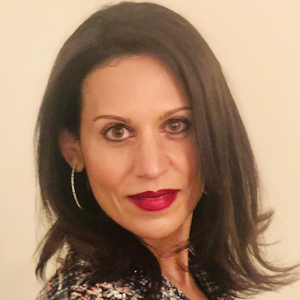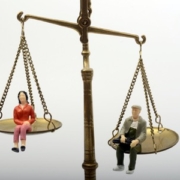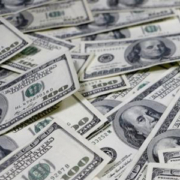Changing Industry Stereotypes Can Increase Women in STEM
 Do we really have to paint a picture to make the serious under-representation of women in science, technology, engineering, and mathematical (STEM) fields any clearer? YES, decided the faculty at New Jersey Institute of Technology, who have released the infograph, “Are Stereotypes Keeping Women Away from Science?”
Do we really have to paint a picture to make the serious under-representation of women in science, technology, engineering, and mathematical (STEM) fields any clearer? YES, decided the faculty at New Jersey Institute of Technology, who have released the infograph, “Are Stereotypes Keeping Women Away from Science?”
Paint a picture it does. A quick glance reveals that women are represented half as much in STEM professions (25%) as they are in the workforce, while rarer yet in engineering and computer and mathematical sciences. From associates to doctorate, women are much less likely to convert their (relatively fewer) STEM degrees into a career in the field, where they’ll net unequal pay and less recognition. In fact, women are twice as likely to end up working in the lower-paying fields of education or healthcare with their STEM degree. Underneath this are the unconscious bias against female applicants and early ingraining of gender stereotypes.
Despite the frustrating gender dynamics at play for women in the STEM field, the biggest reason for the gender gap is too few are. Two recent studies recommend to get more women into the STEM door, widen the entrance: address narrow stereotypes about the field.
Gender, Science, and the “Brilliance” Factor
Recent research published in Science by Leslie and Cimpian found that in academia women are underrepresented in fields across science and humanities that value innate brilliance and morerepresented in those that value hard work and dedication.
Why? Because our culture still implicitly links raw, innate talent/genius/inborn ability/brilliance with men and not women.
As the Washington Post put it, “The difference between Sherlock Holmes and Hermione Granger may help explain why women don’t thrive as much as men in some fields of academia. One is brilliant by nature and the other has to work her butt off, and they represent the pervasive gender stereotypes of our age.“
Across 1,800 academics from 30 different disciplines, academia participants rated the importance of having “an innate gift or talent” or “a special aptitude that just can’t be taught” to succeed in their field versus the value of “motivation and sustained effort.” The study found the implicit emphasis put on brilliance as a success criteria predicted under-representation of women far better than other tested hypotheses. The findings extended to African-American representation, too.
The researchers clarified there’s no convincing evidence that men and women differ in capacity for brilliance, and the study can’t validate it’s actual importance in the field. “The argument is about the culture of the field,” Cimpian said. “In our current cultural climate, where women are stereotypically seen as less likely to possess these special intellectual gifts, emphasizing that those gifts are required for success is going to have a differential effect on men and women.”
Researcher Leslie shared, “Consider for example how difficult it is to think of even a single pop-culture portrayal of a woman who like Sherlock Holmes (& others)…displays that special spark of innate, unschooled genius.”
Field-specific success beliefs conspire with long-held gender stereotypes. “Any group that’s stereotyped to lack a trait that a field values is going to be underrepresented in that field,” Cimpian said.
While the gender stereotype around brilliance may be infuriating, the researchers recommend it’s the stereotype around the discipline that can easily change: downplay the importance of innate brilliance and reflect all excellence requires hard work.
“These findings suggest that academics who wish to increase the diversity of their fields should pay particular attention to the messages they send about what’s required for success,” said Leslie.
Culture Stereotypes & Computer Science
Dove-tailing the recommendation, a new research paper from Cheryan, Master, and Meltzoff asserts that to open the gates to computer science and engineering wider for women, diversify the gatekeeper stereotypes about the culture of these fields.
The article reports, “Computer science and engineering are stereotyped in modern American culture as male-oriented fields that involve social isolation, an intense focus on machinery, and inborn brilliance. These stereotypes are compatible with qualities that are typically more valued in men than women in American culture. As a result, when computer science and engineering stereotypes are salient, girls report less interest in these fields than their male peers.”
The authors acknowledge that many social constraints keep women from engineering and computer science. But they found that diversifying the way these fields are represented – the kind of people, the nature of the work, and values of the field – changes young women’s sense of interest and belonging in the field.
With no direct experience of the field, stereotypes and media representations are often what students have to go on, and they are tight and narrow. Picture a white, geeky, tech-focused, socially awkward but intellectually brilliant, pale-skinned guy with glasses who sleeps and eats science and works on his own. The researchers say cultural stereotypes like this “are perceived as incompatible with qualities that are valued in women, such as being feminine, people-oriented, and modest about one’s abilities.” Women don’t feel they belong to the culture.
The researchers argue that diversifying and broadening the stereotypes (rather than getting rid of them as they also positively draw people) attracts more women to computer science and engineering by enabling them to identify more with the fields, without deflecting male interest.
One opportunity to widen image is in media, which strongly impacts upon stereotypes. In one study women who read articles that computer science was breaking away from stereotypes were more interested in the field than those who read an article confirming them, whereas men’s interest was not affected.
A second opportunity to widen image is in more diverse exposure to the people in the field. In a previous study, Cheryan found that women’s interest was positively influenced when they interviewed a computer scientist who had non-stereotypical appearance (plain t-shirt) and preferences (eg enjoys socializing), regardless of their gender. In fact, the experience increased women’s sense they could succeed in the field compared to women who interviewed with the stereotype. Men’s sense they could succeed was not affected.
The researchers noted, “When the people in computer science depict themselves in a manner consistent with the stereotypes, it can convey to other students that one must fit the stereotypes to be successful in these fields.”
A third opportunity to widen image is around workenvironments, which reflect dominant cultural values. The researchers previously found that young women who were exposed to a room with non-stereotypical objects (nature posters vs. Star Trek, water bottles vs. soda cans, neutral books vs. science fiction books) were far more likely to express interest in pursuing computer science than those that visited a stereotypical room. This represents a sense of “ambient” belonging.
The researchers point out that while these sciences remain male-dominated cultures in which women do face obstacles, “A broader image that shows many different types of people and working environments in computer science and engineering actually represents a more realistic portrayal.” Diversifying representation of computer science helped increased female enrolment in certain universities.
Going beyond narrow cultural stereotypes in STEM widens the door to girls and women. And as more women dare to enter it, the culture will likely, if slowly, evolve too.
By Aimee Hansen









